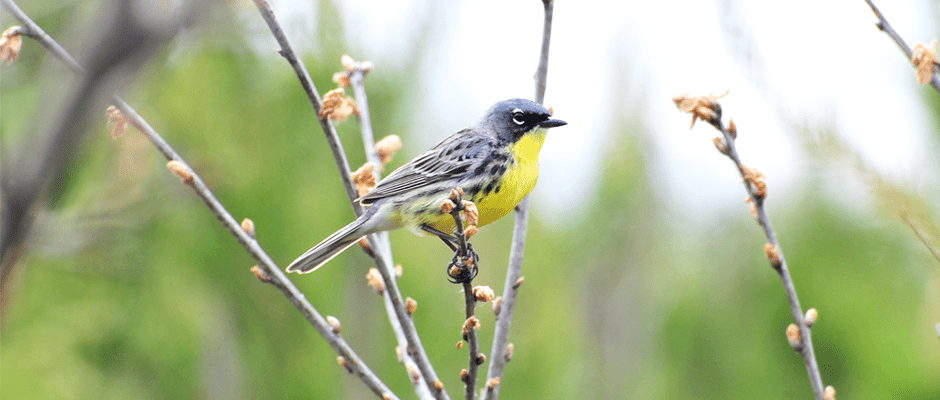Share this article
Ground light may shine too brightly for bird migration
Street lamps may be disrupting a migratory bird’s eye view, according to new research.
“Even simple lights in our backyard are changing the flights of birds overhead,” said Daniel Mennill, an associate professor at the University of Windsor and an author of the recent study published in The Condor: Ornithological Advances. “It means we have to change how we think about how we manage the natural world.”
Mennill said that researchers already know that lights on tall buildings and radio towers can lead to thousands of bird deaths every year. But since birds use stars to help them orient their migratory patterns, he thought ground level lights might be confusing their trajectories.

Dan Mennill, the study’s senior author, holds a nocturnal flight call microphone used to survey avian biodiversity during migration. ©C. Sanders
Most birds migrate at night though, so researchers had to listen closely to what was occurring overhead.
They recorded the sounds migratory birds made when flying over Ontario’s Point Pelee National Park and the rest of the province’s Essex County near the U.S. border by Detroit. They chose 16 sites near lighted parking lots and other bright areas and 16 sites in the darkness, recording from sunset to sunrise. Each pair of sites sat around 10 kilometers apart.
“We found a strong effect,” Mennill said. “We found 300 percent more birds detected over the lit sites compared to the dark sites.” The researchers tracked around 15 species and species groups including warblers, thrushes and sparrows. They found there were also around 40 percent more species flying over lighted areas than the dark ones, and that there were no major differences in the preferences of the species.
“Those numbers offer quite compelling evidence that ground level street lights influence the behavior of birds migrating overhead.”
He said that researchers still haven’t determined why the birds prefer to fly over the lights. It could be that they are changing the paths of their migrations. “These ground level sites may short circuit the navigation systems in their brains,” Mennill said.
But it could also mean that birds over brighter areas are easier to detect as they swoop down lower in altitude.
No matter what the reason, Mennill worries that the lights could be an additional stress on birds already suffering from problems related to climate change, habitat loss and depredation by introduced species such as cats.
“That probably makes this already more demanding for the birds,” he said.
Header Image: Endangered Kirtland's warbler. ©U.S. Fish and Wildlife Service Headquarters








